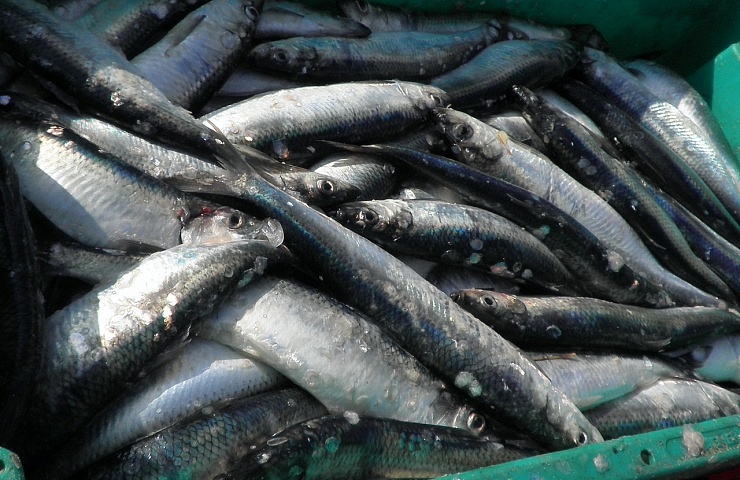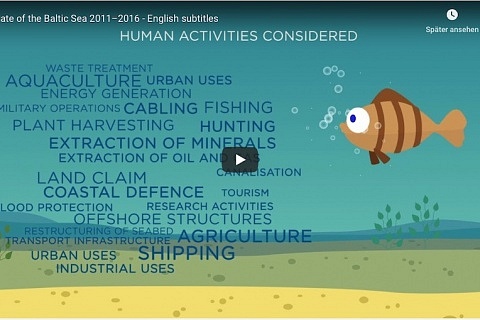Overfishing is a problem in the Baltic Sea. One-half cut in quota for eastern Baltic cod proposed. Western Baltic cod under safe biological limits and illegal discarding of undersize fish doubled. Western spring spawning herring catch should be zero. Up to 100% of undersized plaice being discarded
Responding to reports on Baltic fish stocks published today by the International Council for the Exploration of the Sea (ICES), campaigners called on fisheries ministers to end the annual cycle of overfishing, by following the lowest advised fishing limits when setting quotas for 2019.
“Due to years of poor management and continued overfishing, iconic fish stocks such as Baltic cod and western herring are in perilously bad shape, while illegal discarding continues unabated in the Baltic Sea”, said Our Fish Programme Director Rebecca Hubbard.
“In 2017, governments knowingly perpetuated overfishing – and the resulting decline in social and economic values – by setting four out of ten Baltic fish stocks above scientific advice. This year, fisheries ministers must pay particular attention to the detail of the ICES reports – and act with extreme caution when setting 2019 quotas to ensure that fish populations can be rebuilt to healthy levels”.
ICES advice provides the scientific basis for deliberations on Baltic Total Allowable Catch (TAC) limits that are set at the annual EU Agrifish Council meeting each October. Despite their important role in applying the Common Fisheries Policy and ending overfishing, these Agrifish Council meetings have been criticised for their lack of transparency and accountability, and persistent failure to set fishing limits according to the law (CEO 2017; TI 2017; NEF 2017).
Cod
Catches of the eastern Baltic cod stock have been plummeting for 30 years. From an extraordinary peak at 400,000 tonnes in the 1984 to just under 57,000 tonnes in 1992, this year ICES advice recommends 16,685 tonnes – a drastic cut of one half from last year (ICESb 2018).
ICES found that the western Baltic cod population remains extremely depleted, and below safe biological levels. A recent upward trend entirely reliant on just one strong year class of fish in 2016 – despite the fact that recruitment has been low for almost 20 years, and the 2016 year-class is bookended by two of the worst recruitment years on record (ICESa 2018). Recruitment numbers indicate how many fish are coming into the population, and therefore it’s chances of rebuilding in the future.
“Baltic fisheries in general, and cod in particular, are fast approaching a situation when management decisions have no effect, since the stocks are not responding as would normally be predicted by scientific models”, said Nils Höglund, fisheries policy officer at Coalition Clean Baltic.”For example, quotas for eastern Baltic cod have not limited fishing efforts for many years now. While fishermen have not come close to catch what they are allowed to — because the fish are too small or simply not there, the eastern Baltic cod stock also lacks the scientific data required to make proper assessments. What fisheries Ministers have failed to do is ensure there is plenty of sprat for the cod to eat in relevant areas – and this should be tested with priority.”
“Last year Baltic Sea Fisheries Ministers ignored scientific advice and set catch limits far above ICES advice. This year, we see the results – eastern Baltic cod catch advice has been slashed, and western cod stocks are perched on a knife edge and illegal discarding of juvenile fish has doubled”, said Our Fish’s Hubbard. “Fisheries Ministers need to note ICES strong warnings and set the TAC for Baltic cod at the lowest levels proposed for commercial and recreational fishers.”
Herring
According to ICES, the Baltic’s Western herring stocks have been outside of safe biological limits since 2008, with low recruitment since the mid-2000’s, reaching a record low in 2016 and 2017. Despite fishing pressure being far above sustainable levels (Maximum Sustainable Yield) between 1992 and 2009, coinciding with a crash in fish stock size, fishing pressure was not substantially decreased even after 2010 (ICESc, 2018).
“In a damning indictment of poor fishery management, ICES recommends that catches for the Western spring spawning herring should be zero, due to continued overfishing. This sends a clear message to Baltic fisheries ministers that they cannot continue to ignore natures limits without repercussions. This year, fisheries ministers must end the decades of overfishing of western herring or risk commercial extinction of an ecologically important fish stock” said Hubbard.
Plaice
Despite ICES reporting the Plaice fishery to be in reasonably good health, with fishing pressure decreasing and stock populations increasing in recent years, illegal discarding is now considered to be widespread in the Baltic (ICESd, 2018).
“Only seven tonnes of undersized plaice was landed in 2017, whereas researchers estimate the real figure is over 400 tonnes higher, with 100% of the catch still being discarded in some fleets. This constitutes not only a huge waste of marine resources, but illegal, unreported fishing. Baltic Sea member states – especially Denmark, Germany, Sweden and Poland – must start dealing with this IUU fishing in their fleets by significantly increasing monitoring and control at sea,” concluded Hubbard.

 Deutsch
Deutsch




Leave a Reply